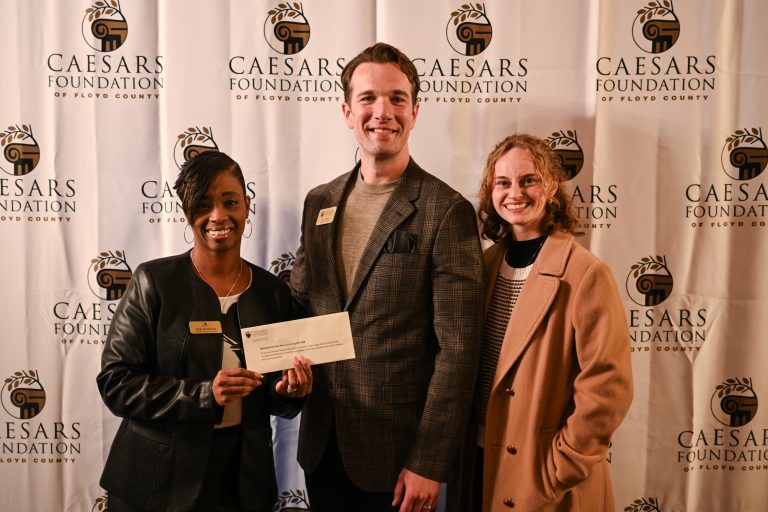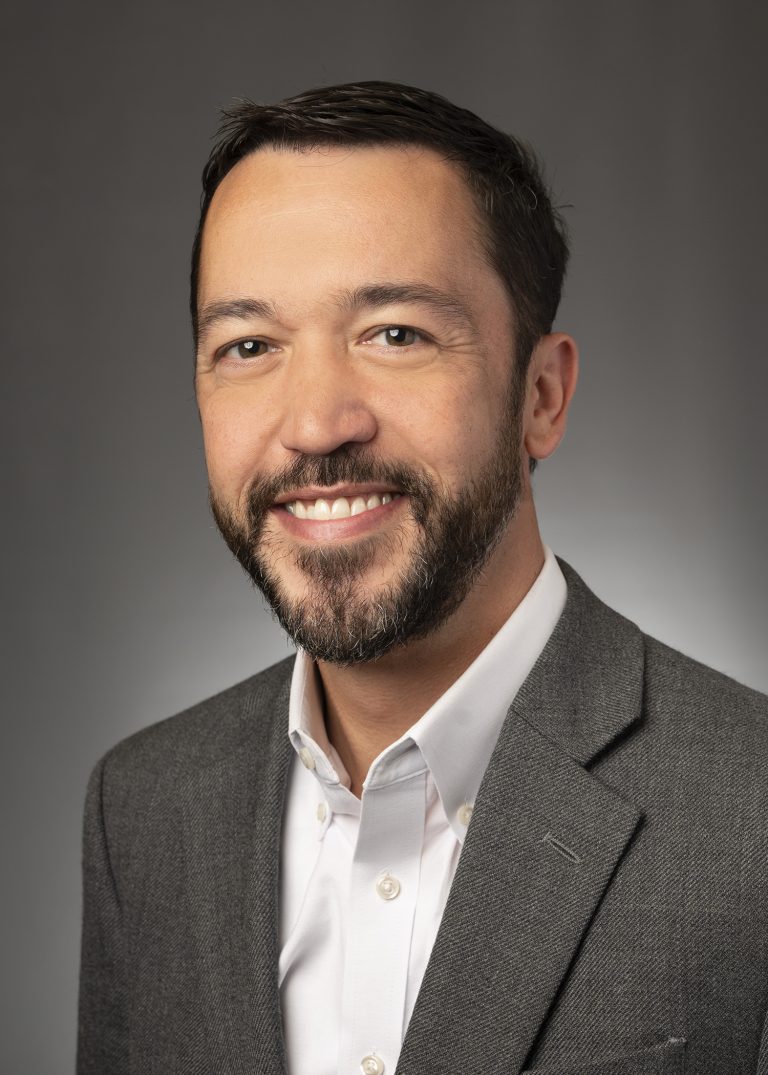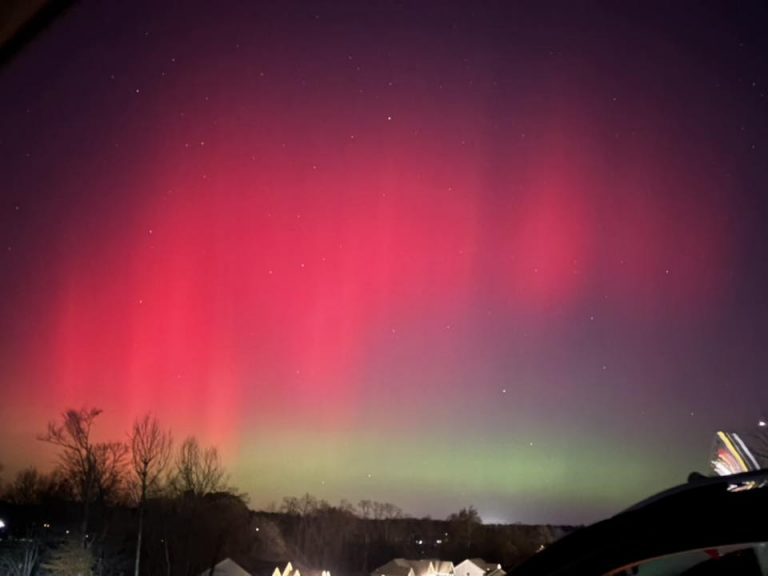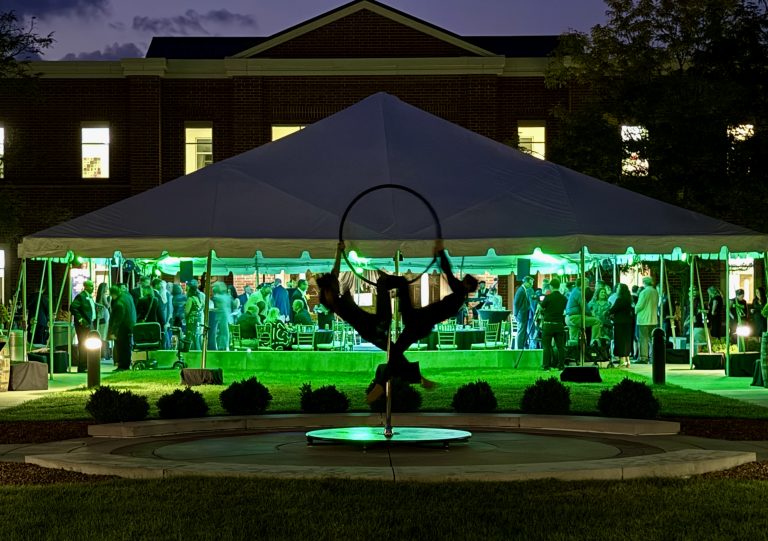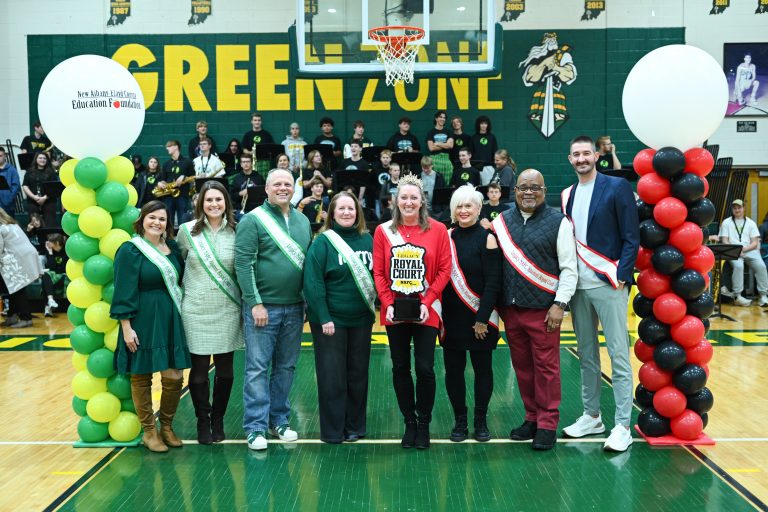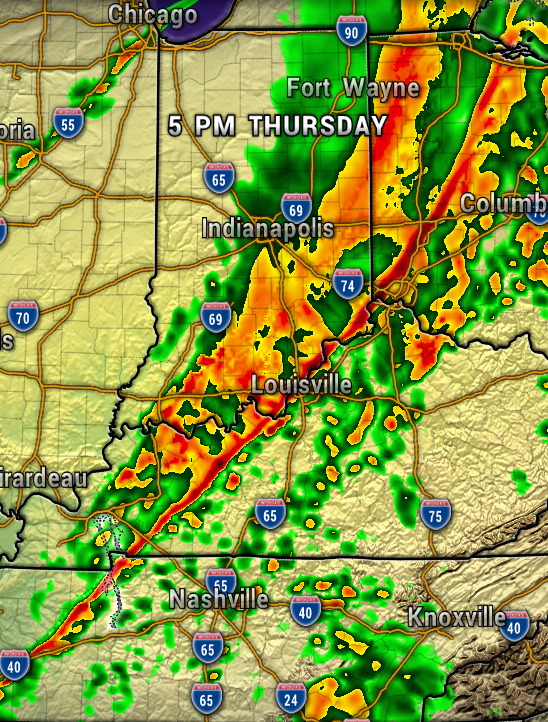
Story by Steve Kaufman | Photos by Antonio Pantoja and Courtesy Photos
The former WHAS anchor is retired from TV and busier than ever.
Doug Proffitt, the WHAS11 news anchor, was in the hospital recently for a minor procedure.
“As I was getting my anesthesia, the nurse starting asking me about Melissa Swan,” he said, “how much she liked and admired her and how much I must enjoy working with her.
“I had to tell her that, actually, Melissa had just retired from WHAS. She seemed genuinely upset. I had to break this news to her.”
A couple of lessons from that story:
- Best not to upset a healthcare professional just as you’re about to undergo a procedure – even if you make your living reporting breaking news.
- Local TV personalities in every market become a part of people’s lives, seen as companions, friends, even members of the family, someone you spend an hour or so with every evening. And after 31 years on Louisville television, anchoring the news every night for 28 of those years, Melissa Swan had become just that sort of presence in the metro TV market.
She’s gone now from the local TV news scene, though she insists it’s not a retirement. She has formed a company called Swan Communications LLC – “I didn’t have time to think of anything catchier” – and will be giving speeches, moderating events and consulting.
“I think I’m busier now than before,” she said.
Swan also will do things close to her heart that she never had sufficient time for before. She has joined the board of Maryhurst, which provides treatment and counseling for children in crisis, often victims of abuse, and she is on an advisory committee for the Girl Scouts of Kentuckiana.
Swan and her husband also plan to spend more time at the vacation home they bought about four years ago in Leavenworth overlooking the Ohio River. “We love spending time here, it’s beautiful and picturesque, and very relaxing.” It’s also close to Swan’s parents, both in their 90s.
But she has left a legacy in the local marketplace. She has become admired as a strong newsperson; as a pioneer in the days when women were still fighting for a place at the anchor desk; and as a role model for women who want to have both a career and a successful family life.
In fact, she said, one of her speeches will be about juggling a professional career while raising two young children. She has walked the talk. In September 1989, Swan was five days away from delivering her second child when a mentally troubled ex-employee named Joseph Wesbecker entered the old Standard Gravure printing facility carrying an arsenal of weapons and a thousand rounds of ammunition, and began opening fire.
“The plant was right off the back parking lot of the WHAS studio,” Swan recalled. “I was working half-days because of my condition and wasn’t supposed to go in that day. But when I saw what happened, I went in and began working the story.”
She found then-Mayor Jerry Abramson giving a speech at the Galt House and became the first person to interview him about what came to be called “the Standard Gravure massacre.” She anchored the show that night and gave her report on the eight murders and 12 injuries, and the gunman’s suicide – one of the first memorable workplace shootings in Louisville.
And then she went home to prepare for delivery.
“Motherhood is respected in the workplace far more than when I was trying to do it,” she said. “If you were working full-time while expecting a baby, there wasn’t a lot of understanding of how difficult it was to do all the things you had to do. And we didn’t ask for any exceptions.”
There was no Family Leave Act. Human resource directors who protected the rights and needs of workers were rare.
“It was me fighting for me and my baby,” said Swan.
That fight continued after her babies were born. “I fought for going home to dinner every night,” she said, “or sometimes the girls came to the station and we had dinner there. Overall, I think my daughters will tell you I didn’t miss many dinners, didn’t miss many school events or games or recitals.”
Today’s young career women may not face all the challenges Swan’s generation faced, but she feels her message still resonates. “You have to stick to your guns and stand up for yourself,” she tells them. “Keep your priorities in mind, even when those priorities occasionally conflict with one another. Find a way.”
It worked out for her. Daughters Megan, 32, and Mary Hannah, 26, are grown and on their own. Megan is getting married in October to Doe Anderson co-worker Brandon Radford. Mary Hannah lives in Los Angeles, supporting herself as a massage therapist while she tries to get a writing career going.

“I don’t think we’d be having this conversation if the girls hadn’t grown up to be strong, independent women. My husband and I always said that if we thought the girls needed more, I’d quit my job and do something that would have me home at night,” Swan said. “But I have to give him a lot of the credit. He was there every night. He gave the baths, read the bedtime stories, picked them up from dance class.”
“He” is Jim Snider, her husband of 36 years. They met in 1978, when she was an undergraduate at Indiana University doing a show on Bloomington’s PBS station, and he was the station’s staging and lighting director.
“Part of my job was doing her TV makeup,” Snider recalled. “It put us in close proximity. We started dating.”
Swan had gone to IU to study journalism after editing her high school yearbook and writing a newspaper column in her hometown of Leavenworth.
“We were the Leavenworth Wyandots, named after the tribe of Native Americans,” she recalled. “The student newspaper was called Smoke Signals. It was different times.”
At Indiana, she wrote for the Indiana Daily Student and had a print journalism career in mind, but she took radio and TV courses as curriculum requirements and, by her senior year, was anchoring a Friday night TV show on WTIU called “High School Scoreboard,” a review of all the Bloomington high school games played that evening.
“I’m from Indiana, I know a little bit about basketball,” she said. “I also was a cheerleader in high school.”
After graduating in 1978, she went to Channel 18 in Lexington. “I got a gold star on the board in Ernie Pyle Hall at IU as the first one in my broadcast class to land a TV job.”
She was doing general assignment reporting, the classic entry-level journalism job. But she was now engaged to Jim, who was still in Bloomington, so she quit Channel 18 and returned to Bloomington as the news director of a rock-and-roll radio station.
“You can’t imagine anything more useless than being news director of a rock station,” she laughed. “It was an FCC requirement to have a certain amount of public affairs programming. But station management couldn’t have cared less.”
In Lexington, Swan had worked with Liz Everman, who then left to begin her own long and distinguished career in Louisville television. In 1981, Everman called Swan about an opening at WLKY Channel 32, which was Louisville’s ABC affiliate at the time (it’s now the CBS affiliate). Thus began the long mutual love affair between Melissa Swan and the Louisville Metro viewer market.
She remembers clearly her first big news story.
“In February 1981, a series of sewer explosions destroyed more than two miles of streets around the southern part of Old Louisville, near the university,” she said. “A large quantity of chemicals from the Ralston Purina plant had gotten into the sewage system and seeped out into the streets.”
It was a watershed moment, both locally and nationally, in the fight for hazardous materials safety and wastewater system security. Swan spent months covering the rebuilding of that part of the city and all the legal and political entanglements that followed.
She moved to WHAS (which was then the CBS affiliate) on Jan 2, 1985, as a nighttime and weekend reporter.



(From Left to Right: Gary Roedemeier and Melissa Swan at Churchill Downs. | Melissa Swan | Longtime co-anchors and friends Doug Proffitt and Melissa Swan.)



(From Left to Right: Jeff Lifson and Melissa Swan anchored the news at WHAS-TV | Melissa Swan | Milton Metz and Melissa Swan at the 60th annual Crusade for Children.)
“WHAS was a powerhouse; everyone wanted to work there,” she said. “Working nights and weekends was difficult with a five-month-old baby, but it was the place to be.”
It was also the perfect shift for an eager, ambitious reporter. “Fewer reporters worked at night, so I got a lot of breaking news assignments. It was difficult, though. Breaking news meant I learned to be ready to drop what I was working on and switch stories, and the deadline pressure to get on the 11 p.m. news was incredible. But it was a good way to get on the air. And a good way to get to know the community.
“If you look back at all the WHAS anchors, Doug (Proffitt), Rachel Platt, Gary Roedemeier – we all worked that night shift,” Swan said.
Her nearly 30-year affiliation with Proffitt began in those days, too.
“I joined the station in 1987,” Proffitt recalled. “Melissa and I both worked the night shift, with a veteran news guy named Jim McGrath. We’d all come in, in the afternoon, and compete with one another to get the best assignments, get the story that led the 11 o’clock news.”
Proffitt recalled that he and Swan were enterprising reporters, leaving the office each evening to track down stories. McGrath, a long-time police reporter, would stay behind and count on his sources to phone in leads to him.
“It was really frustrating,” said Proffitt. “McGrath would always get the lead story.” Proffitt and Swan developed a friendship that exceeded just working colleagues. Their easy rapport on the anchor desk was no accident.
“We became fast friends,” he said. “And I don’t mean in that public relations kind of ‘we’re a family here.’ We really were. We’ve been to family events together, birthdays, graduations, holiday dinners, weekend vacations. Melissa is a fascinating person. I say she’s always 30 years old. She has more energy than most people, and she’s what a journalist should be – insatiably curious and furiously competitive.”
As an example, he remembers a big story involving Humana and transplants that brought the national CBS news crew out to Louisville, where they set up shop in the WHAS building.
“They’re all out on the story and, in the late afternoon, Melissa comes bursting through the door, determined to beat the network’s story, not only earlier but also better,” Proffitt said. “She went on at 6; they didn’t air until 7. I remember her busting by me on the way to the editing room and saying to me, ‘Watch mine, it’s going to be better than theirs.’ And, of course, it was.”
As is the progression on local news, Swan began anchoring on weekends, then earned the 6 p.m. weekday slot in 1988 alongside Jim Mitchell. There was a long stint with Roedemeier, and Proffitt joined the desk in 2007.
“She was great to learn from, a top-of-her-game journalist who had this uncanny sense of the news,” Proffitt said. “Newsrooms are contentious, you argue a lot about how to handle a story. But hard news is the DNA of this station, and she epitomized it. I cannot recall ever disagreeing with her direction on a story.”
As much of an impact as she had on the Louisville news-watching public, she hoped she had an even-greater impact on her daughters. “It was important to me that they saw that a woman could succeed in a career without giving up her personal life,” she said.
How’d that work out? Jim Snider, Melissa’s husband, laughed.
“The girls’ friends were in awe of seeing Melissa on TV every day, the star quality and the fame that went with it. The girls saw it as a matter of course, a job their mother does, no better, no worse,” Snider said. “I once heard Mary Hannah tell a friend that, No, she doesn’t watch her mother on TV, because it’s just the news.”







